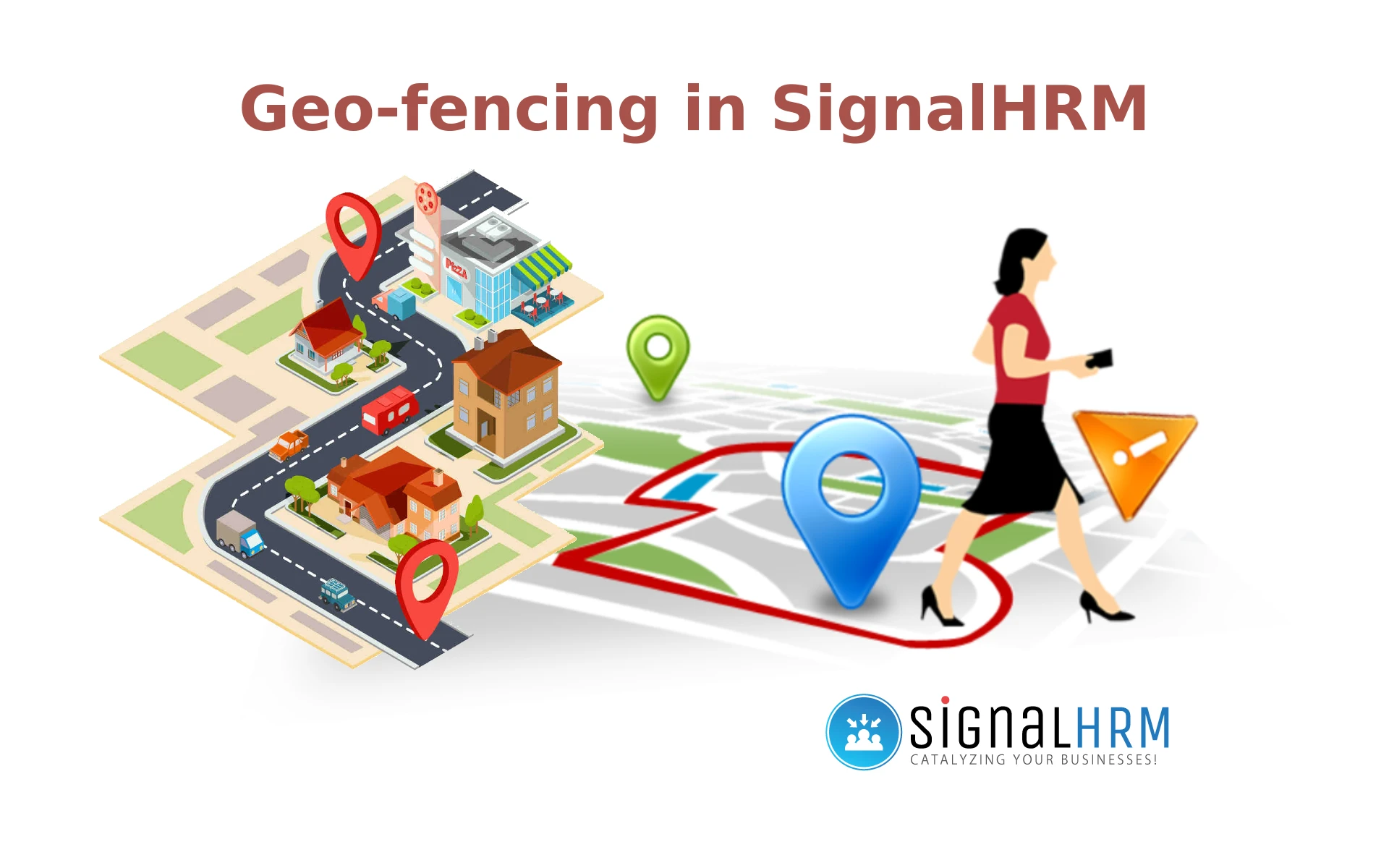
Technology has redefined the way organizations work, especially in the domain of workforce management. For instance, geo-fencing has emerged as an important elements of HRMS management to track employees. Read the blog we’ll discuss how geo-fencing is transforming the HR domain.
Geo-fencing:
Geo-fencing refers to creating a virtual boundary around a specific location that is defined using latitudes, longitudes, and radii. Apps such as Global Positioning System, RFID (Radio-Frequency Identification), Wi-Fi, and cellular data.
Example:
Let’s consider a salesperson who has to visit a specific area for promotion and make sales. Instead of going to the office for attendance, the salesforce can go to the field directly and his attendance is automatically marked. Isn’t this time-saving and productive? The location-based attendance management system easily integrates with HRMS applications. The managers can create geo-fence. Once the employee enters the geo-fenced areas, they can mark attendance. When the employee leaves the geo-fenced area, they cannot mark attendance.
Types of Geofencing Attendance System
GPS-enabled Geofencing System:
This system deploys GPS to track employee attendance. The employees use their mobile phones to log in and log out when they enter or exit a predefined virtual boundary around a specific location.
RFID-powered Geofencing System:
Using RFID tags or cards, this system tracks employee attendance. Employees carry an RFID tag or card linked to their identity, scanning them when entering or leaving the designated area. Further, it automatically records these entries
Wi-Fi-Based Geofencing System:
Using Wi-Fi networks, this system creates a virtual boundary around a specific location. It depends on Wi-Fi signals to detect the location. The attendance is seamlessly logged when employees enter or exit the boundary.
Hybrid Geofencing System:
This system merges multiple geofencing technologies, such as GPS and RFID, to offer a secure and accurate attendance tracking solution.
Why is Geo-fencing important?
The satellite-based global positioning systems give accurate details. Military and defense technology use GPS-aided navigation to track locations.
Since both employers and employees agree on how geo-fencing will be done, it is a transparent process. It is the responsibility of both parties to ensure the technology is used for intended use only. Also, the organization must protect the employee location information and the employees must keep the device on as per the mutually agreed terms.
The employees can find reassurance in the fact that the system will trigger an alert if any irregular location pattern is identified. Such anomalies indicate deviation from the designated work location and unplanned absences. In such cases, the manager can promptly reach out to ensure safety and offer needed help. Geo-fencing automation saves time. Since the precise attendance records for all, the data quality used to calculate time spent on different projects is high, leading to accurate productivity metrics.
How does Geo-fencing work?
- The organization establishes a virtual parameter known as geofence around the chosen area. This is done through a specialized geofencing application or software.
- The organization equips the employees with mobile devices containing geofencing software and apps. The employees download the geofencing app onto their mobile phones.
- Upon download, the employees access the geofencing app and log in using their credentials. The geofencing app monitors and tracks the location of the employee.
- As the employee exits the predefined geofenced area, the geofencing app records their attendance status.
Conclusion
Geo-fencing addresses the attendance tracking needs of remote workforces by following compliance standards. It also scales seamlessly to accommodate the needs of organizations of any size. It strengthens security and minimizes the risk of time theft. SignalHRM features an effective geofencing attendance management module that helps organizations streamline attendance-related processes and enhance productivity.